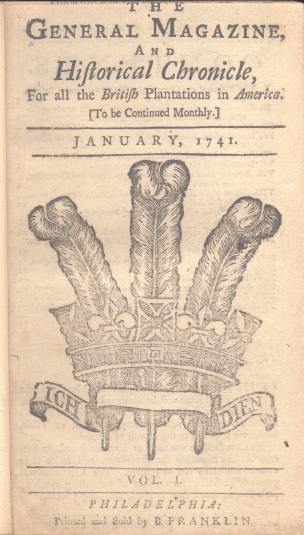Magazines in Eighteenth-Century America: The Voices of Revolution
Printed Page 98

Without a substantial middle class, widespread literacy, or advanced printing technology, magazines took root slowly in America. Like the partisan newspapers of the time, colonial magazines served politicians, the educated, and the merchant class. However, they also served the wider purpose of conveying colonial leaders’ thoughts about the big questions percolating during their era—such as how taxation should work, how much self-rule the colonies should have, how Indians should be treated, and who should have access to public education. Magazines thus gave voice to the people who ultimately decided to break away from England and create a new, independent nation.
The first colonial magazines appeared in Philadelphia in 1741, about fifty years after the earliest newspapers. Andrew Bradford started it all with American Magazine, or A Monthly View of the Political State of the British Colonies. Three days later, Benjamin Franklin launched his General Magazine and Historical Chronicle.
Though neither of these experiments was successful, they inspired other publishers to launch magazines in the remaining colonies, beginning in Boston in the 1740s. The most successful of these periodicals simply reprinted articles from leading London newspapers to keep readers abreast of European events.